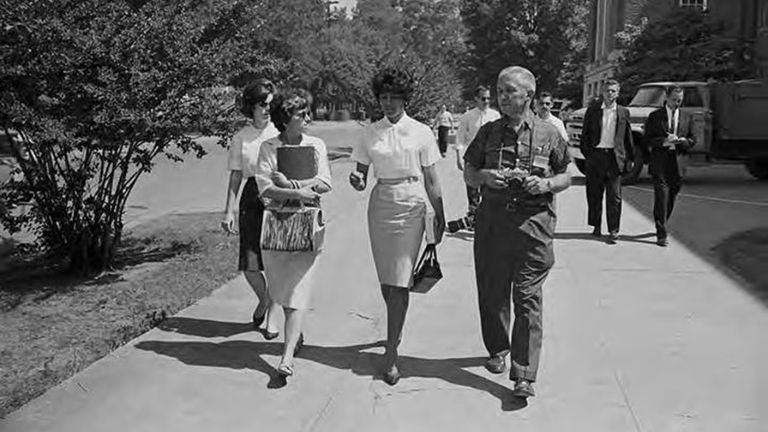The story of the growth of equality for African Americans in America has been one of great achievements, followed by many small gains and many setbacks too. The outlawing of slavery did not instantly make all blacks equal to whites in America. It took many subsequent legal actions as well as hundreds of social efforts, large and small, to slowly make the progress we’ve seen today. But even today, in a new century, there is a continuing battle against racism. It seems we need leadership to guide society toward true equality, as much now as ever in our history.
The abolition of slavery only began the long, hard struggle for African-American culture to become a true part of what it means to be an American. That’s because even though the legal definition of slavery had been rejected, the attitudes and cultural systems in place to keep the races separate and deny Black rights equal to those of whites had to be addressed one by one.
Slowly, over the decades, we have seen great changes, but many have come at a high cost. From the legal granting of voting rights to African-Americans to the civil rights movement to school desegregation, each step forward has been accompanied by resistance, great hardship and significant sacrifice on the part of leaders and ordinary citizens to make each step toward true equality a fact.

Of all the efforts to « level the playing field », none has been more controversial than the affirmative action program. Initially, it was intended as a supplement to the Civil Rights Act of 1964. Over time, it had become clear that despite the removal of laws that enforced segregation or discrimination, there seemed to be a natural segregation in the workplace that kept African-Americans from having a fair chance of getting a job because of an employer’s prejudice, even if that prejudice wasn’t officially recognized in the company’s charter.
There were two important executive orders that made affirmative action a reality. The first was Executive Order 10925 signed by President Kennedy on March 6, 1965, which was the first law to mention the term. This was followed by a much more radical Civil Rights Act signed into law by President Johnson. Together, these laws attempted to correct through legal means the disparity of opportunity that existed in the workplace for people of color by instituting a quota system that employers had to meet federal affirmative action minority employment levels.
But as is often the case when government attempts to impose the right attitudes through legislation, these laws often created as many problems for minorities as they cured. Nevertheless, when the application of quota systems began to become widespread, it opened many doors for African-Americans that would not have opened due to the racial prejudice and silent segregation that prevented the African-American community from reaching its economic potential.
See also our article: Black Power
In truth, nobody really liked this kind of imposed equity system. For whites, they felt the sting of an artificial system of judgment that was sometimes called « reverse discrimination ». While there was some justice that the white community got a taste of what it was like to lose an opportunity because of the color of your skin, it didn’t help the country in our goal of growing together to become a « color-blind » community.
Affirmative Action has been a mixed blessing for the African-American community. While it has done its job in the short term by opening doors closed due to racism, it’s not the ideal solution. That’s because he didn’t fit Dr. King’s vision of a world where a man is judged not by the color of his skin, but by the content of his character. We can hope that we will grow to that point as a culture and see affirmative action as an unfortunate but necessary disposition to help us grow and mature as a truly integrated culture.










